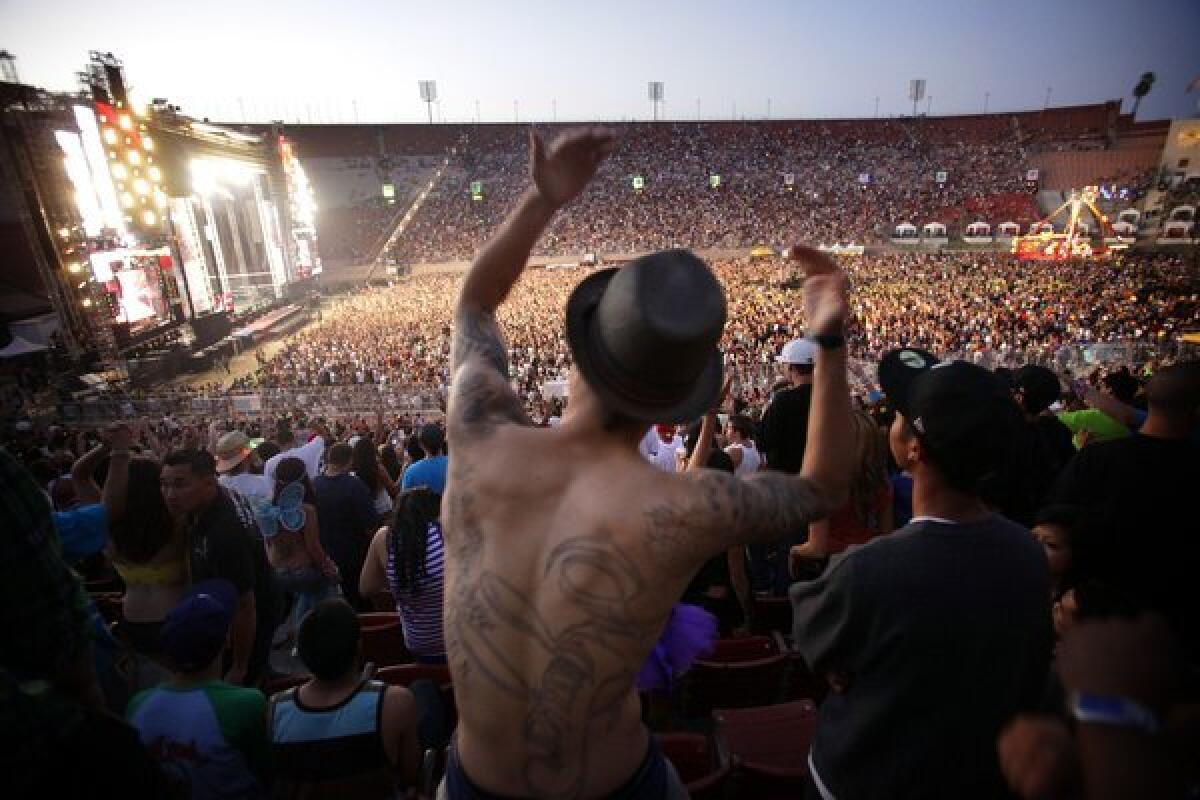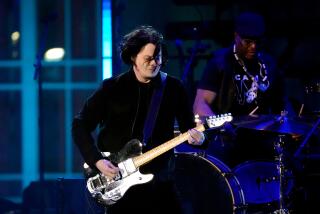New York rave canceled after two deaths, apparently overdoses

- Share via
The last day of a large rave in New York City was canceled Sunday after two attendees died, apparently from Ecstasy overdoses.
The deaths occurred during the first two days of the Electric Zoo rave. At least four other people became critically ill and were hospitalized, Mayor Michael R. Bloomberg’s office said.
“Definitive causes of death have not yet been determined, however, both appear to have involved the drug MDMA (ecstasy, or molly),” the office said in a statement. “The Electric Zoo organizers have worked with city officials to reduce health risks at this event, but in view of these occurrences, the safest course is to cancel the remaining day of the event.”
Raves, which feature electronic music, are tightly bound with Ecstasy or similar designer drugs -- hallucinogens that can cause death, coma or permanent brain damage.
There has been increased scrutiny about the role of raves at mainstream venues. A Los Angeles Times investigation published in February found that at least 14 people who attended raves produced by Insomniac Inc. and Go Ventures Inc. since 2006 died from overdoses or in other drug-related incidents.
TIMES INVESTIGATION: A fatal toll on concertgoers as raves boost cities’ income
The organizer of the Electric Zoo rave, Made Event, canceled the last day at the recommendation of the city.
Made Event said in a statement on its website: “The founders of Electric Zoo send our deepest condolences to the families of the two people who passed away this weekend. Because there is nothing more important to us than our patrons, we have decided in consultation with the New York City Parks Department that there will be no show today.”
Electric Zoo has been held on the publicly owned Randall’s Island over the Labor Day weekend since 2009. It is one of the nation’s most prominent raves. The island is managed by a nonprofit group, the Randall’s Island Park Alliance.
GRAPHIC: 14 rave-goers who died, deadly mix of drugs and raves
The Times investigation of raves analyzed coroners’ and law enforcement reports from nine states. It found most of the deaths were linked with Ecstasy or other drugs. The Times analyzed 64 concerts produced by Insomniac and Go Ventures.
Most of the dead were in their teens and early 20s, according to the records. The youngest was 15-year-old Sasha Rodriguez, who overdosed at Insomniac’s Electric Daisy Carnival in 2010 at the Los Angeles Memorial Coliseum.
A Times investigation in the months after Rodriguez’s death led to the felony criminal indictment of six men, including the heads of Insomniac and Go Ventures, on bribery and other charges. County prosecutors allege that Insomniac’s Pasquale Rotella and Go Ventures’ Reza Gerami conspired to keep a lid on their concert costs, such as expenses for security, by making about $2 million in illicit payments to a stadium manager. They have pleaded not guilty.
RELATED: Near Chicago, 30 sent to hospitals in rave sponsored by L.A.-based Insomniac
The publicly-owned Los Angeles Memorial Coliseum banned raves at the stadium in the wake of The Times’ investigation. Insomniac has since moved its Electric Daisy Carnival rave to Las Vegas.
Raves by Insomniac have not returned to Dallas after 2011, when two people died after taking drugs. A third person had died of an overdose the year before.
In the San Francisco area, the Cow Palace, run by the state, banned raves in 2010, the year two people died after overdosing on Ecstasy at a concert produced by Bay Area-based Skills DJ Workshop.
ALSO:
Utah police officer killed in shooting; 2 people wounded
Search for buried bodies underway at Florida reform school
Chris Christie touts post-Sandy recovery but Jersey Shore is hurting
Follow L.A. Times National on Twitter
Twitter: @ronlin | @pringlelatimes
[email protected] | [email protected]
More to Read
Sign up for Essential California
The most important California stories and recommendations in your inbox every morning.
You may occasionally receive promotional content from the Los Angeles Times.












